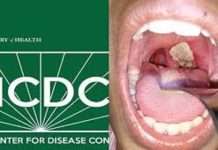Growing older means lots of chances of suffering mental and physical weakness. But a new study published in the open-access journal Frontiers in Human Neuroscience, shows that regular participation in physical exercise especially in dancing can reverse the signs of aging to the brain.
Dr Kathrin Rehfeld, lead author of the study said, “In this study, we show that two different types of physical exercise both increase the area of the brain that declines with age. In comparison, it was only dancing that lead to noticeable behavioral changes in terms of improved balance.”

The scientists recruited volunteers with an average age of 68. They were then assigned to an eighteen-month weekly course of learning dance routines. Some of them assigned to endurance and flexibility training.
Participants in both groups showed increment in the hippocampus region of the brain. This area is mainly prone to the age related diseases like Alzheimer’s.
No doubt, exercise is the best anti-aging treatment. But is not known if one type of exercise can be better than another. To find it out, scientists give different exercise routines to each group.
The common exercise programme involves repetitive activities like cycling, walking etc. At the other hand, dance group was challenged repeatedly to perform a different activity every next week.
Dr Rehfeld explained, “We tried to provide our seniors with the dance group with constantly changing dance routines of different genres. Steps, arm-patterns, formations, speed, and rhythms were changed every second week to keep them in a constant learning process. The most challenging aspect for them was to recall the routines under the pressure of time and without any cues from the instructor.”
Those additional challenges are thought to represent the observable distinction in adjusting showed by those members in moving gathering. Now, scientists are expanding on this examination to trial new work out schedules. They believe this may have potential to increase anti-aging effects on the brain.
Currently, they are testing their new system called ‘Jymmin’. The system generates sounds in the form of melody or rhythm based on physical activity.
Dr Rehfeld said, “We know that dementia patients react strongly when listening to music. We want to combine the promising aspects of physical activity and active music making in a feasibility study with dementia patients.”
“I believe that everybody would like to live an independent and healthy life, for as long as possible. Physical activity is one of the lifestyle factors that can contribute to this, counteracting several risk factors and slowing down the age-related decline. I think dancing is a powerful tool to set new challenges for body and mind, especially in older age.”
He concluded by advising people to get out of their seats and dance to their favourite beat whenever they feel so after work.










